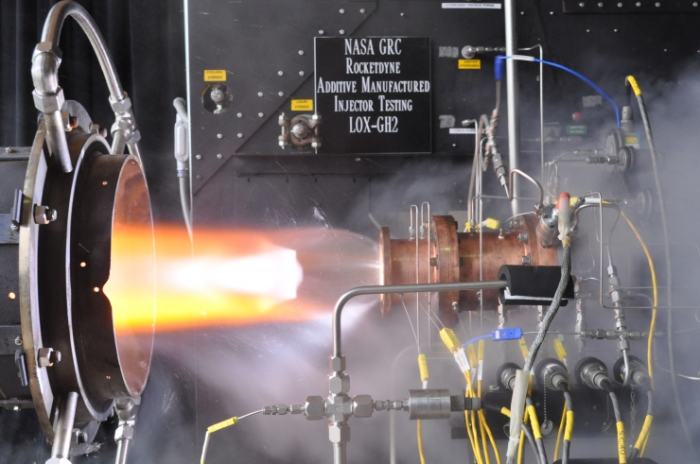NASA has successfully tested the "printed" rocket injector

The other day, NASA announced the successful testing of another model of a rocket engine injector. Probably many of you have seen photos or videos of such tests. If not, then you can look at the time of the test above, where the announcement photo is placed. So, an interesting point in all this is not so much that the tests were successful, but that the injector was “printed” using a special technology that can be considered one of the varieties of 3D printing.
The process itself is called selective laser melting. The essence of the process is that high-energy laser beams act on fine metal “powder”, powder. As a result of selective smelting (very accurate, by the way), we get the necessary part. Energy costs for such a process are quite high, but it is likely that time is saved here for creating complex parts. And not only time, but money is also saved here, since the number of stages of production of a rocket engine injector is minimized. Accordingly, operating costs are also reduced.
The production cost of such an injector using new technology is only 30% of the production cost using traditional technology. In general, not bad, especially considering NASA’s cut budget.
According to the head of the NASA Space Technology Directorate Michael Gazarik, the implementation and widespread use of such technologies on Earth, and especially in space, significantly expands the prospects of space missions. The technology allows to reduce the time and cost of production of engine parts and parts of spacecraft.
Via DVICE
